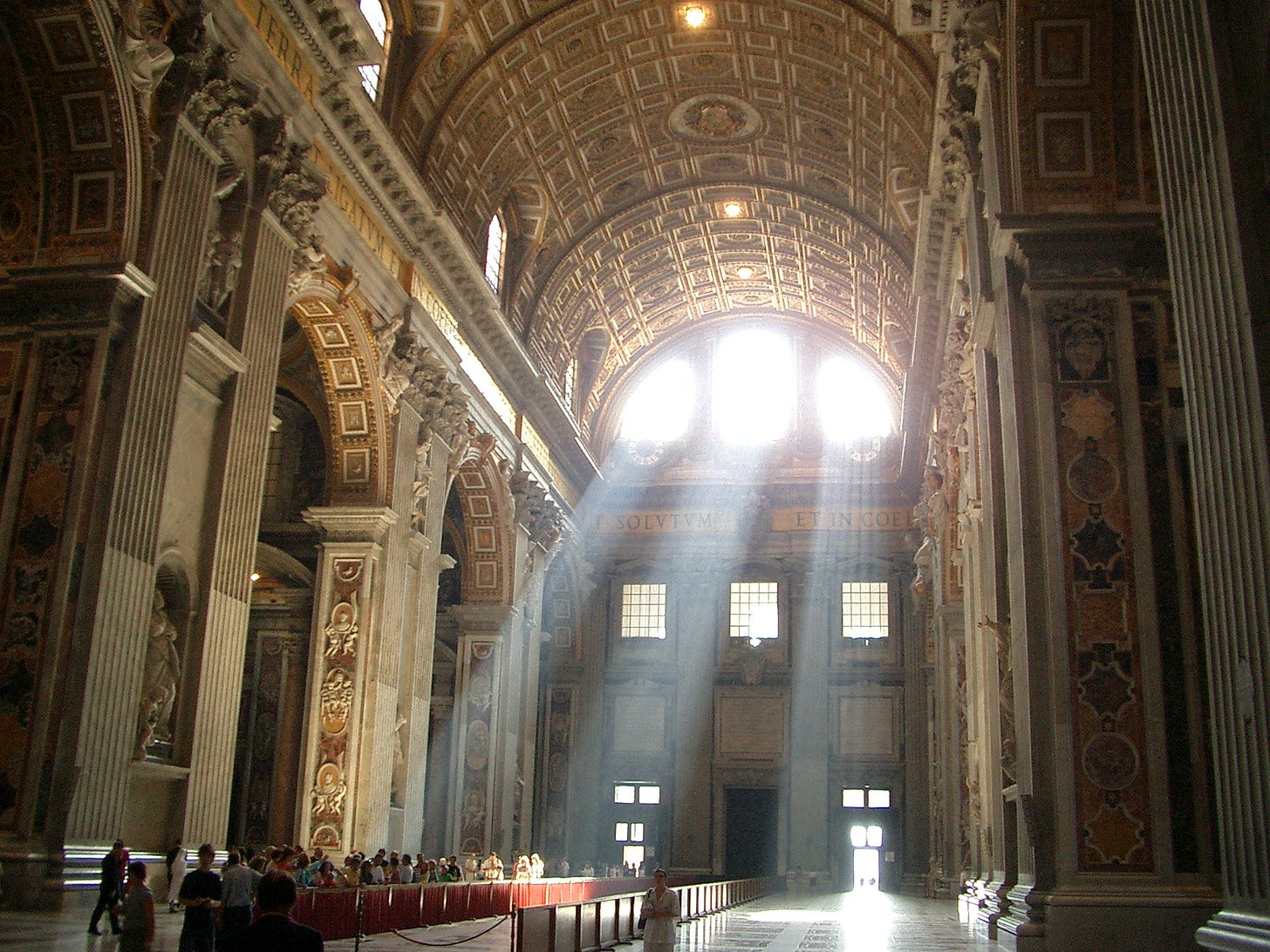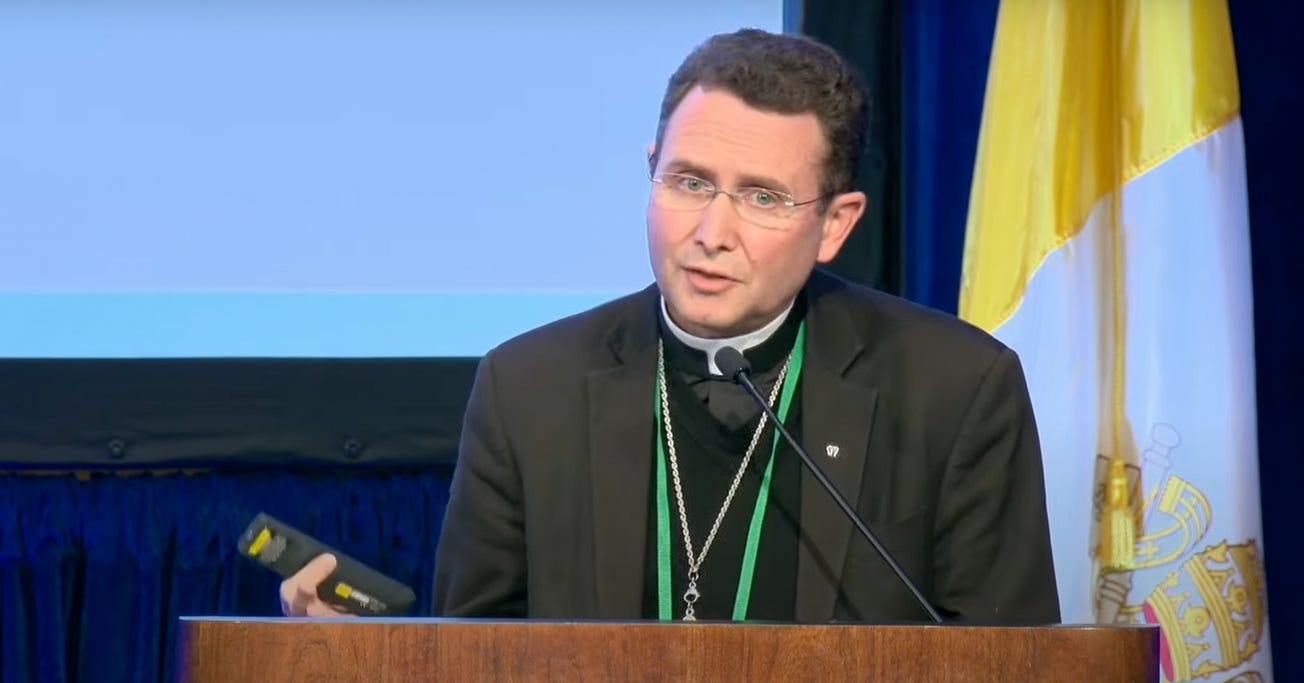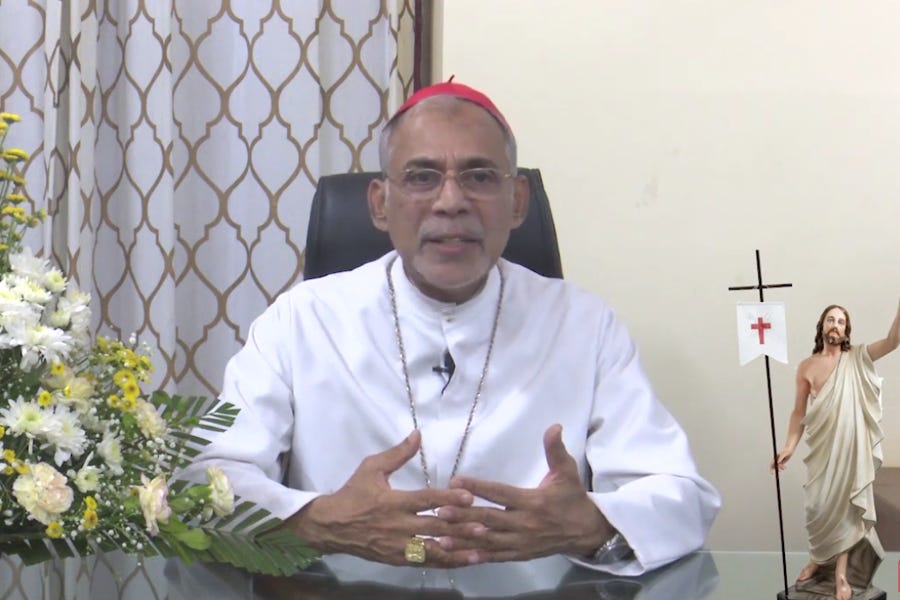A letter published by the Vatican press office June 22 aimed to clarify the details of a March decision to prohibit the long-held and long-standing custom of priests celebrating “private Masses” at the side altars of St. Peter’s Basilica.
But the letter was written in Vaticanese, which does not always excel at clarity. So The Pillar brings you some help on what the letter said, and what it means.
What’s the background to all this? I remember something happened in March…
Something did happen in March, you’re right.
Until that month, it had long been a custom in the Church that any priest visiting St. Peter’s Basilica could go to the sacristy during morning hours, ask for an altar, and offer Mass at one of the 45 side altars, or nine side chapels, lining the massive basilica— right at the church in the center of the Church.
The custom was meaningful for priests who visited Rome and were able to offer Mass at St. Peter’s with pilgrimage groups, or even on their own, on altars containing the tombs of sainted Churchmen, including even Pope St. John Paul II.
It was also commonplace that Vatican officials — the priests, bishops, and even cardinals who worked in the Roman curia would offer their morning Masses at St. Peter’s Basilica each morning, which many have said became a beautiful and important part of their spiritual lives.
Pilgrims who were not part of a group would often join the “private” Masses being celebrated at those altars, especially if they came across one offered in their own language.
But in March, the Vatican’s Secretary of State announced that priests would no longer be allowed to offer daily Masses at those altars. Instead, priests visiting or living in Rome would be permitted to concelebrate some of the daily Masses offered in Italian at the main altar of the basilica.
The announcement also said that priests wishing to offer Mass in the Extraordinary Form of the Roman Rite — often referred to as the “Tridentine” or Traditional Latin Mass,” would be allowed to do so only in a small side chapel in the Vatican grottoes. Only four priests would be permitted to offer the Extraordinary Form each day.
The March announcement was met with some frustration.
Priests and bishops living in Rome said they were discouraged to lose their regular place for offering Mass, some even argued the announcement might be a violation of canon law. In the U.S., many priests who did not live in Rome said they had looked forward to one day offering Mass at St. Peter’s - something which now seemed unlikely.
According to journalists in Rome, only a small number of the Vatican officials who once offered their morning Masses at St. Peter’s joined the daily concelebrated Masses to which priests were invited when private Masses came to an end.
So what’s happened since?
On June 22, Cardinal Mauro Gambetti, the archpriest — or priest-in-charge — at St. Peter’s Basilica, issued a letter which reaffirmed that the morning celebration of private Masses at the basilica is no longer permitted — at least, most of the time.
The cardinal allowed some exceptions:
On the feast day of a saint entombed in the basilica, private Masses would be permitted at his tomb.
When there would be good pastoral reason to allow for a Mass offered in a particular language.
When there would be a good reason for an individual, or private, Mass, discerned on a case-by-case basis.
Gambetti’s letter also emphasized, without giving specifics, that “everything possible must be done” to accommodate Catholics who would like to attend Mass celebrated in the Extraordinary Form at the basilica, respecting the 2007 motu proprio on the subject, Summorum pontificum.
The cardinal took pains to affirm the theological principles emphasized in the Secretariat of State’s March letter, especially the Church’s preference for the concelebration of a singular Mass rather than the concurrent celebration of several Masses in the same place — a preference expressed as a norm in canon 902 of the Code of Canon Law. But Gambetti also allowed for a broad spectrum of exceptions to that rule, and seemed to reserve judgment to himself about when they would be permitted.
What will happen next?
Vatican watchers are not sure how permissive Gambetti will actually be with exceptions to the general rules he’s affirmed. His letter said that he doesn’t want exceptions to become the rule, but at the same time, he seemed open to a number of situations which might merit them.
It’s not clear whether, over time, permissions will be granted so regularly as to gradually see the March rules fade into obscurity, or whether the cardinal wanted to exert his ability to grant exceptions, without concrete plans to do so. And it’s also unclear how much of the entire discussion about rules has been rooted in the complex personal politics of curial officials.
Time will tell. In the meantime, those who have hoped to see a return to the long-standing customs of St. Peter’s shouldn’t plan on offering private Masses of thanksgiving at the basilica quite yet, but they now have at least some reason to hope for a new normal, a bit closer to the old.





